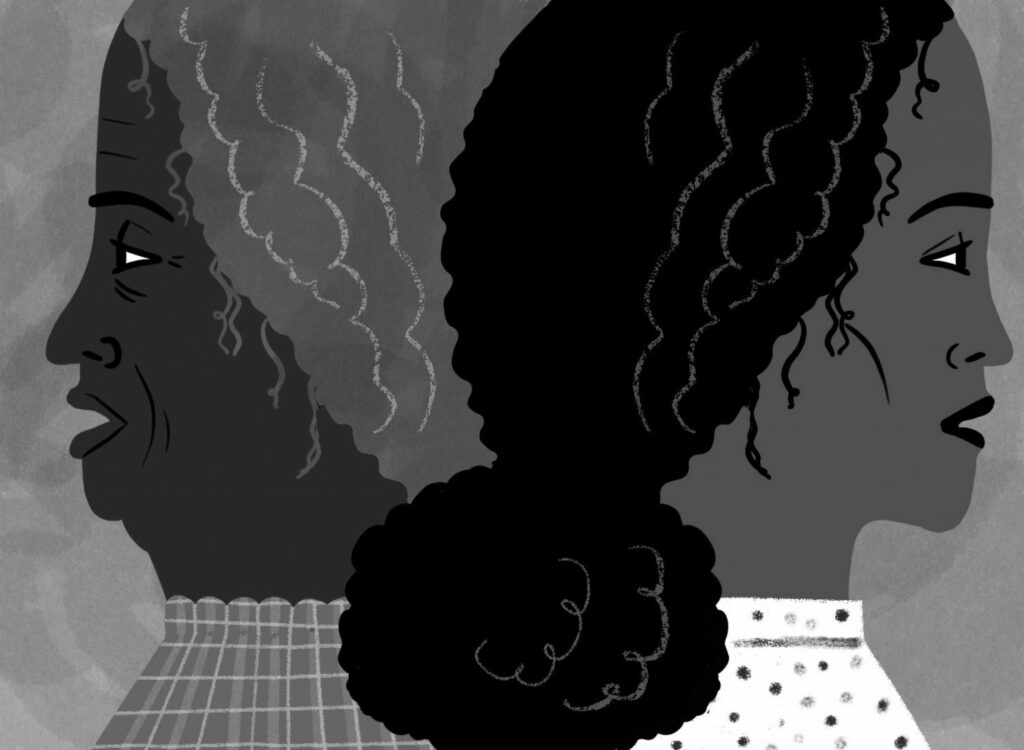In his author’s note to his debut novel, Kai Thomas describes his “relationship to the Indigenous peoples of the lands I called home” and how his thinking about that connection has evolved over time: “I knew and had seen many stories that were concerned with the relationships between black and white people, and similarly, between Indigenous and white people. And of course, between whites and any other people of colour. But I couldn’t think of a single story I knew that meaningfully explored black and Indigenous relationships.” So he set out to fill this void with a well researched and compelling work of historical fiction.
The resulting book opens in July 1859, in what would become southwestern Ontario. Situated near Chatham and Windsor, the fictional village of Dunmore is a hub on the Underground Railroad — and increasingly populated by Black refugees fleeing the American South. “What a feeling, to work in free country,” Lensinda Martin says of the newcomers. “To move to the harmonizing rumble and trill of voices, and to see faces unified in the sweat and toil, not of terror, but of purpose.”
Lensinda, who narrates much of the novel, is a biracial woman who has learned to read, write, and tally accounts with the help of an old bachelor in Spancel Narrows, her hometown near Lake Huron. Unlike most of Dunmore’s inhabitants, who have escaped slavery, Lensinda arrives from the north to work as a housekeeper and a reporter for the Coloured Canadian. She also has special knowledge when it comes to healing: “I had once reset and splinted the broken leg of a child who suffered a kick from a mule; twice I had stitched the cut wounds of drunken men who had brawled outside the tavern; and another time I had used pipe smoke of mullein and hops to calm a young woman who had been found screaming like a banshee in the swamp.”
One day, a slave catcher and bounty hunter, Pelham Beall, comes to town pursuing six fugitives from Kentucky, who are now residing with Simeon, a local farmer: “Beall abducted a stable boy who is employed at the Dunmore inn and tortured him, hanging him by the neck until near death in order to obtain the whereabouts of the fugitives he sought.” Among those he is hoping to capture is an elderly woman named Cash, who ends up shooting him with his own rifle.

Their stories build on and incorporate each other.
Jamie Bennett
Simeon summons Lensinda, who assumes that her “knowledge of potions as well as poisons” is the reason she has been called. Yet there’s no helping Beall: he’s dead. “Folk will want the story,” Simeon tells her. “A story must be had to make something out of all this mess. And, well, I might very well be wrong. But something out there in that dusk made me think you be the one to tell it.” Reluctantly, Lensinda agrees to record and share Cash’s version of events.
When Lensinda travels to the jail in nearby Chatham, however, Cash explains that she has no concern for what people think of her or the murder — proposing instead that the pair create a partnership. “Will you barter with me?” she asks. “A tale for a tale?” The barter is confirmed. One shares part of her history; the other recounts part of her own. Their stories build on each other and, in the process, incorporate revelations about Lensinda, about Cash, and about the complex history of Black and Indigenous people in Canada.
At the centre of this astonishing novel is the unfolding relationship between two strong, exceptional women. Lensinda tries desperately to obtain the true account of what took place; Cash plays a game with the young reporter. Slowly but surely, they infiltrate each other’s stories, relaxing their distrust of each other and gaining insights into their pasts. The tales finally overlap as Lensinda learns the truth of her own background and as Cash reveals her family secrets, including that of her Indigenous husband, John, which she has safely locked away in her mind. Out of an initial mutual hostility, they develop through their stories a shared understanding — an understanding that is also love.
“Freedom is never absolute,” Lensinda observes at one point, “and therefore escape, despite what they tell you, yields no final destination.” Elsewhere, Cash describes a similar sentiment: “The people of the village knew what too few know now: that home is a changing thing, and no home will be so forever. But they contented themselves with a place for a while. And after a while, they would move on.” In the Upper Country offers telling commentary on the plight of such people, who were both adjacent to the United States and far from it. “New and old arrivals to Dunmore were reminded of that special miracle,” Lensinda explains, “whereby a slave with nothing in the world could become a man with a house, food for the winter, and work.” It is a novel that contrasts “life under the whip” in America with comparative freedom.
Plunging into the relatively undocumented world of Black and Indigenous relationships in nineteenth-century Canada, Thomas fashions a chilling and sobering study of men and women caught up in an increasingly brutal reality, where a “Negro town” could be “driven to extinction.” In his focus on two remarkable figures, he allows them the time and the space to venture into their pasts and learn the consequences of their journeys. The result is a highly original piece of fiction — and a major addition to the multi-dimensional, multi-faceted world of contemporary Canadian literature.
David Staines is the author of, most recently, A History of Canadian Fiction. He teaches English literature at the University of Ottawa.

